July 2012
Monthly Archive
July 28, 2012
First, I will start this post by quickly listing all of the things I will miss most about Japan:
- The food – Japanese food is awesome, no further explanation is needed
- The heated toilet seats and kotatsu tables (heated table with blankets) – they are awesome when it is cold
- The architecture - efficient houses, beautiful temples, sky-high pagodas, who wouldn’t miss it!?
- The Japanese gardens – they are so breathtaking, I cannot begin to explain how peaceful it is to relax inside of a Japanese garden
- The cleanliness – almost everywhere I go in Japan, the streets look very well kept and the streets are virtually trash free
- Japanese TV – I love anime, so that is obvious, but the game shows are so awesome! (even though it is still difficult for me to understand everything)
- The sense of safety – wherever I go in Japan, I always feel pretty safe, no matter what time of day or what area
- The public transportation – it is nice having practically ubiquitous trains, buses, subways that are almost always on time
- The people – everyone that I have met here has been so incredibly friendly and helpful; I can spout so many stories of how generous and helpful everyone here has been!
- The mindset – perhaps the thing I will miss most about Japan is the mindset of everyone. Being in Japan has exposed me to a new way of thinking that I really like. I think Japanese people have more of a general respect for everything including other people, the cities they live in, the environment, animals, etc
A Few of the Most Important Lessons Being in Japan Has Taught Me
In the context of sustainability, I have learned numerous lessons from Japan. Of course, I have learned about a few different methods of organic farming. Besides the most standard organic farming methods which merely abstain from pesticides and fertilizers, I am also familiar with the “Natural Farming Method” and “Kyusei Nature Farming” (used in conjunction with Effective Microorganisms) (see previous posts for further explanation). I have discovered the “Chisan Chishou”, “grow locally, consume locally” movement that encourages citizens to buy from local growers and pay more attention to the environmental impact of their food choices. I have seen firsthand how the Japanese mindset promotes efficient use of resources while also minimizing waste. I have realized the convenience and environmental impact of an efficient and widely available public transportation system, as well as the importance of walking and biking for errands instead of using the car. I have found that the cars in Japan get much better mileage than the average American car, though that is a little bittersweet. It is fantastic that there is technology that allows us to get such great gas mileage and reduce greenhouse emissions, but it is very disappointing that is is not more widely available. I am sad to say that I have become more aware of the impact of money and politics on the environment and I hope the world makes a shift more towards selfless concern for the environment and away from profit.
Moreover, after being away from my family, friends, and comfortable routine, I realize how important it is to not take things for granted. People tend to get used to their friends and family and get bored with their seemingly monotonous daily schedule, but when they leave, they may realize how special it all is. Even those things once thought of as boring become precious. I have realized that I must actively try to remember how lucky I am. I am so fortunate to have met such amazing people in my life, to be at a university that I love, and to get the opportunity to have such amazing experience like traveling abroad so young. I will try to show my love and gratitude to all those around me, so they can always know that I am grateful for everything.
Even more, I have realized how similar we all are. People always talk about “culture shock” and getting used to adapting to a new way of life. Yes, the Japanese way is very different from the American way, and maybe it takes getting used to for some people, but I think that more than anything, traveling to Japan has shown me how similar we all are. There are many differences in the way Americans and Japanese people think, but I have noticed even more things that we have in common. It is difficult to explain, but I think that going abroad shows us there are many commonalities in the way all people act, and we are not really as different as we sometimes think.
July 22, 2012
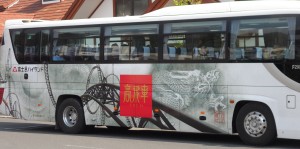
Super cool looking dragon bus
Having been in Japan for a while, I have used quite a bit of public transportation. Trains, buses, shinkansen (bullet trains) and subways exist virtually ubiquitously throughout Japan. Even small towns often have train stations that can take you wherever you would like to go. With the super-efficient and highly available public transportation system, it is quite easy to get from any given point in Japan to another. And, even though the system is huge and my Japanese is not the best, I still find it pretty easy to get around Japan. Public transportation in Japan is privately owned, but used by almost every citizen, even for daily activities. Unlike in the United States, where almost everybody goes to work, the store, or anywhere else by car, Japanese citizens often use public transit. It is not uncommon for a person in Japan to commute to work an hour away by train daily. This is especially feasible because Japanese public transportation is very punctual and is considered late if it does not arrive by the specified minute.

Passenger train
But, the benefits of Japan’s massive public transportation system goes far beyond convenience: it also is much better for the environment. The widespread use of public transit in Japan causes the country to have much less carbon emissions than if cars were the dominant means of getting around. To compare the impact of different means of transportation, scientists usually calculate the amount of energy per passenger mile (100 p-km) to standardize for comparison. In Japan in 1999, the measured efficiencies were 68 kWh per 100 p-km for cars, 19 kWh per 100 p-km for buses, 6 kWh per 100 p-km for railways, 51 kWh per 100 p-km for air, and 57 kWh per 100 p-km for sea. According to this data in 1999, railways, which are some of the most popular ways to get around in Japan, were over 11 times more efficient than using a car! More recent data puts car and air travel in Japan at 2.0 MJ/pkm, buses at 0.7 MJ/pkm and railways at 0.4 MJ/pkm (when caclulated from primary energy) or 0.2 MJ/pkm (when calculated from electricity kwh). Still, one can see that the efficiency of cars is much less than that of public transportation. The widespread use of public transportation in Japan reduces carbon emission by using less energy, and thus is a better way for eco-friendly travel. One study even estimates that if the U.S. had used public transit as its main means of transportation in 2005, it would have reduced CO2 emissions by 6.9 million metric tons: 3.9 directly saved from cars, and 3.0 saved from reducing traffic congestion.
July 16, 2012
I am not sure if you are familiar with anime or manga, so I will take the liberty of briefly explaining it. Simply put, anime is Japanese animation and manga is Japanese comic books (it would do me well to note here that this is the American definition; in Japan, anime means any type of animation and manga means any type of comic). You probably know some of the most famous animes, like Pokemon, Dragon Ball, and Sailor Moon. However, these specific anime are more aimed at children, and are not really representative of the average Japanese anime. Other popular anime you may know include Bleach, Inuyasha, One Peice, or Naruto. However, I would not say these are especially representative of all anime either, as there is such a broad scope of topics that anime covers.
Anime and manga covers a wide array of topics and often times are very mentally stimulating. It is my personal opinion that the content of many anime and manga delves deeper into human psyche and world issues than do most American television shows. Though, I think that is something you should see for yourself. 
Because of the wide array of topics that anime covers, anime and manga is read and watched by all age groups in Japan, including adults. Unlike in America, where cartoons are usually aimed at children, there are anime and manga in Japan for everyone. You can find ones aimed at toddlers, elementary schoolers, teenagers, young adults, and adults. Anime and manga cover almost any genre you can think of, including adventure, action, romance, drama, comedy, horror, mystery, fantasy, thriller, etc. But, they also have genres that are found almost exclusively in Japanese anime and manga. One such genre is bishounen (pretty boy) and bishoujou (pretty girl), which usually features sparkly (sometimes literally) and idealistic characters.
Anime and manga differ from Western cartoons and comics in the style of drawing. For example, anime and manga artists tend to pay more attention to proportionality than do American animators. It is not uncommon for American cartoons to feature characters with very strange proportions (think anything on Cartoon Network); however, that is uncommon in Japan. Nonetheless, Japanese styles of drawing do have overly large eyes. Another large part of anime and manga are facial expressions. Japanese animators make use of many more facial expressions than do their American counterparts, and they often have specific iconography to represent certain emotions.

Haruhi Suzumiya
Anime is omnipresent throughout Japan. You can see anime-related products ranging from action figures to everyday around-the-house products such as cooking ware. Anime and manga characters are even used in advertisements! Here are some pictures of anime-related things you will see in Japan. (By the way, One Piece is the top manga in Japan right now, so you will see a lot of pictures of it.)

One Piece manga
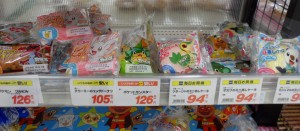
Pokemon sandwiches

One Piece, Pokemon and Hello Kitty bento boxes (lunch boxes)

Elementary schooler books

One Piece lunch recipesPokemon lunch recipes
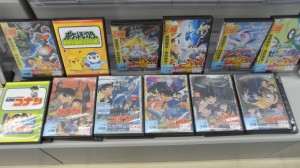
Some anime videos

Manga section of a store

Closer picture of some manga
July 8, 2012
Okay, as random as this may be, green tea flavored foods are really popular in Japan. So, while I was walking around the store, I took pictures of some of the many green tea flavored foods for you to see!
A challenge for you! The kanji (Chinese character) for tea is 茶 (in Japanese hiragana, it is ちゃ, pronounced “cha”). See if you can find the character for tea in all of these pictures! 
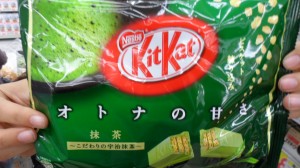
Green Tea Kit Kats
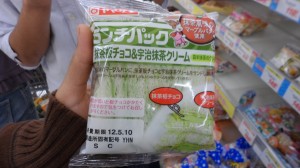
Green tea bread with green tea chocolate filling. I kid you not!
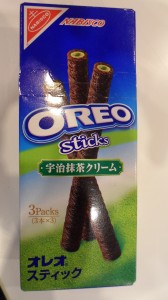
Green Tea Oreo Sticks
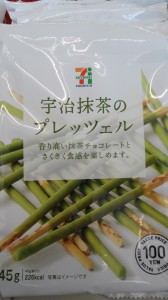
Green Tea Chocolate Covered Pretzels
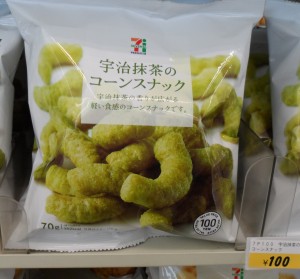
Green tea flavored corn puffs (green tea cheetos!)
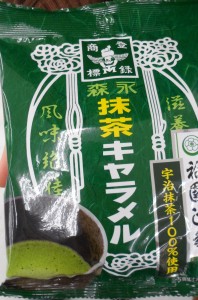
Green tea carmels

Green tea pastry
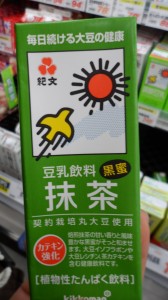
Green tea soymilk
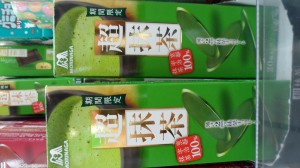
Green tea candy perhaps?
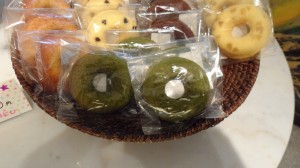
Green tea donuts
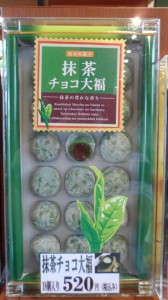
Green tea mochi with chocolate filling
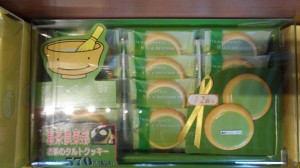
Green tea tart cookie
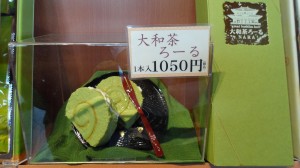
Green tea roll cake
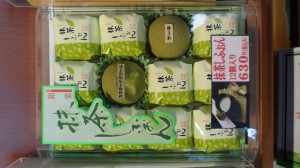
Green tea chiffon cake with green tea filling
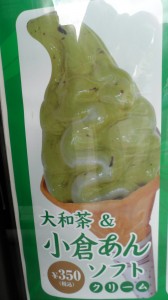
Green tea ice cream
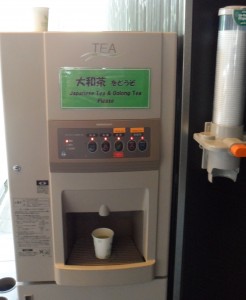
Tea (instead of water) dispenser
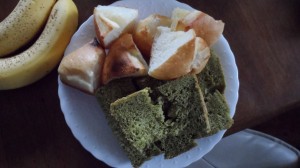
Green tea bread
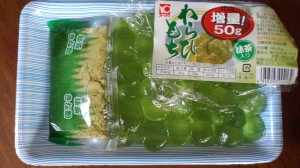
Green tea warabi mochi with green tea powder for dipping
July 3, 2012
Kyusei Nature Farming, which was started by Mokichi Okada, is another method of organic farming, though it differs a bit from the previously discussed Natural Farming Method. Kyusei Nature Farming, unlike the Natural Farming Method, does not prohibit tilling or weeding, however it does also try to encourage a more natural approach to agriculture. Mostly, the Kyusei Nature Farming is very similar to any ordinary organic farming method except for one thing: it is often used in conjunction with Effective Microorganisms (EM).

The concept of beneficial Effective Microorganisms was first developed by Teruo Higa from the University of the Ryukyus in Okinawa, Japan around the 1980s. From his research, he reports that there are certain microorganisms that when used in farming, can positively affect numerous parameters. He found this group of beneficial organisms to contain lactic acid bacteria, photosynthetic bacteria, ray fungi, yeasts and mycorrhizal fungi. In his research, Higa claims that these organisms, in mixed cultures through fermentation reactions, produce organic acids, plant hormones, vitamins and antibiotics. They also did many things that were beneficial to the growing crops. For example, they dissolved nutrients that are often difficult to dissolve (such as rock phosphate), bound heavy metals to prevent the uptake by plants, provided organic molecules for plant consumption, protected crops from pathogens, insects and diseases, stimulated plant growth, and improved the properties of the soil.
For the EM to work optimally, the soil pH must be adjusted to around 6 or 6.5, the soil must be kept moist, a humus content of about 3% must be maintained, and EM must be diluted to about 1:1000.
There has been some debate as to the validity of the claims, and even Higa himself admitted the main issue is the lack of reproducibility and inconsistent results. He went on to say the most difficult aspects of using EM is one must understand the nutritional and environmental requirements of the microorganism as well as its interactions with the environment and other microorganisms very well, which is still being investigated.
Nonetheless, EM is now being researched further, as it could be a promising new addition to organic agriculture. It could allow us to increase productivity while not having to use fertilizers or pesticides. In a paper by Myint Lwini and S. L. Ranamukhaarachchi that talks about controlling wilt disease, it was shown that the most effective bio-control for the disease was EM. Even more, other experiments have been done by numerous individuals that tested the effect of EM use on yield of crops. These studies usually found that there is an increase in crop yield when EM is used.
It seems EM may be a great new way to boost organic agriculture. For the past few years, EM has even used for composting residential waste in Christchurch, New Zealand. The local city council backs EM and is beginning to conduct local research for use as an organic fertilizer.





























